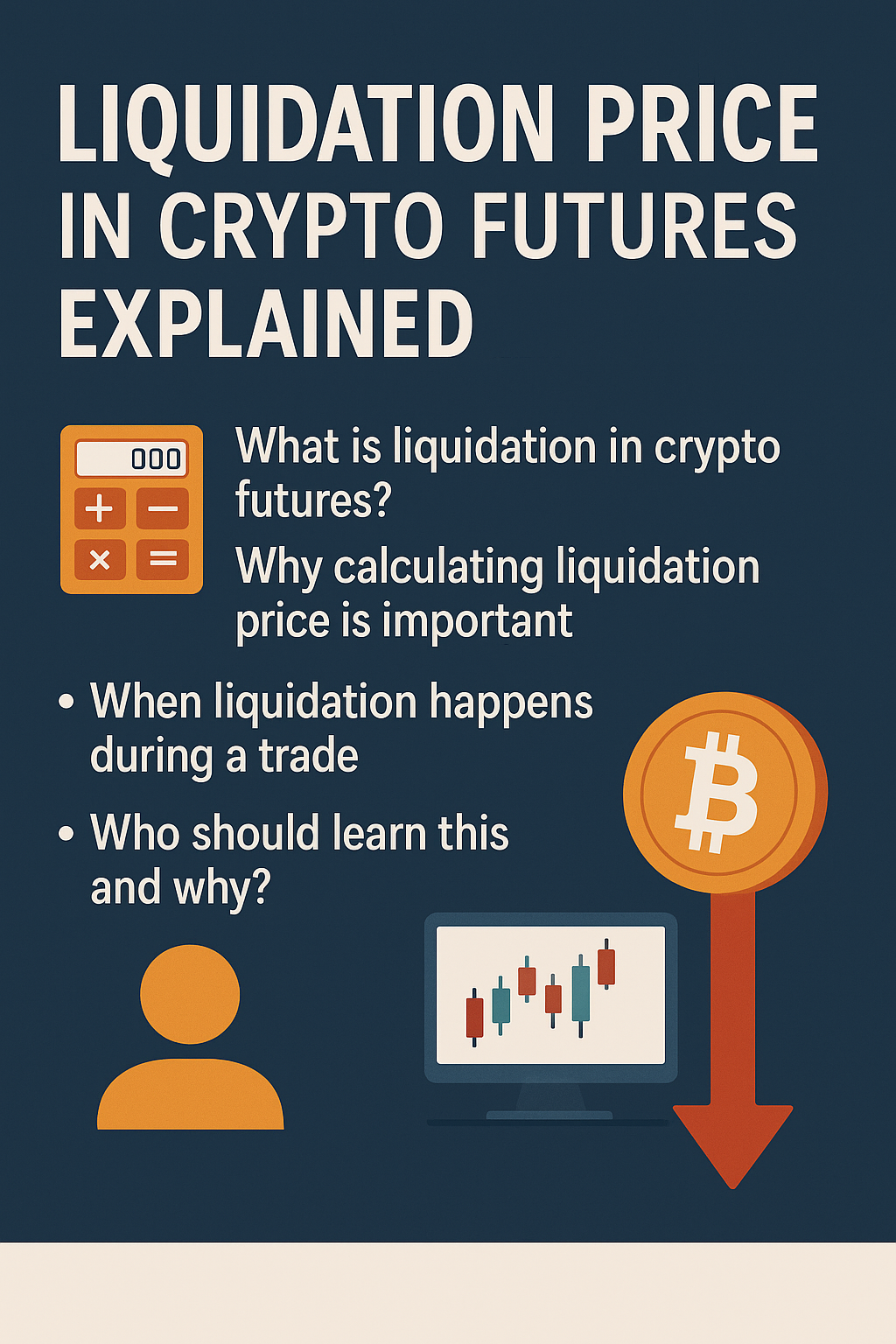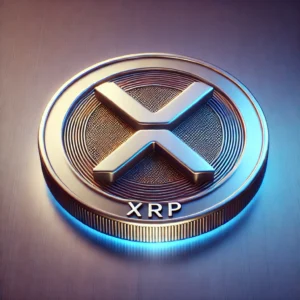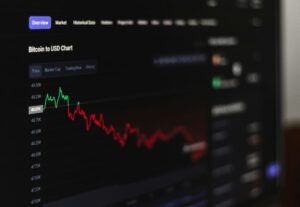Liquidation is one of the most common — and most dangerous — outcomes in crypto futures trading. It happens when your open position is forcefully closed by the exchange due to insufficient margin, often wiping out your capital in seconds. With the rise of high-leverage trading in 2025, liquidation has become the number one reason traders lose funds across platforms like Binance, Bybit, and OKX.
Most new traders don’t realize how close their trades are to liquidation until it’s too late. That’s why it’s critical to learn what liquidation is, how to calculate your liquidation price, and what role your leverage and margin play in triggering it. A little planning can mean the difference between surviving a dip — or getting wiped out instantly.
What Is Liquidation in Crypto Futures?
Liquidation in crypto futures means your position is automatically closed by the exchange when your margin balance is no longer enough to cover your losses. This can happen very quickly, especially if you’re trading with high leverage and low capital.
When liquidation is triggered, your entire margin (the money you used to open the trade) is lost, and the position ends — whether or not the market eventually rebounds.
Why Calculating Liquidation Price Is Important
Your liquidation price is the key level you must know before entering any futures trade. It shows you the exact point where the exchange will force-close your trade.
If you don’t calculate or track this number, you’re trading blind. A small market move could wipe out your entire position without warning. Smart traders always use a margin calculator or check the liquidation estimate in their platform’s “Order Preview” section before entering.
When Liquidation Happens During a Trade
Liquidation doesn’t wait for your permission. It’s triggered the moment your margin ratio hits 100% — meaning your losses have eaten up all available margin. The exchange auto-sells your position at the best available market price, often with slippage.
It can happen due to:
-
A fast price drop
-
Ignoring funding fees over time
-
Over-leveraging without a stop-loss
-
Or sudden market volatility (news, FUD, CPI reports, etc.)
Who Should Learn This and Why?
-
Beginners: So they don’t lose their first trade without understanding what happened
-
Intermediate traders: To better manage margin and scale positions safely
-
Pro traders: To control liquidation across multiple trades and accounts
-
Bot users and strategy traders: To set safer parameters and auto-protect capital
If you trade crypto futures, understanding liquidation isn’t optional — it’s part of your survival kit.
What Is Liquidation Price?
Liquidation price is one of the most important numbers you need to know in crypto futures trading. It’s the exact price at which your trade will be automatically closed by the exchange when your margin can no longer support the loss. It’s calculated based on your leverage, entry price, and the margin you’ve committed to the trade.
Most traders get liquidated not because the market moved too far — but because they didn’t know how close their liquidation price really was.
Simple Meaning for Beginners
In simple words, liquidation price is the danger zone. It’s the market price at which your position is shut down by the platform to stop further losses. You don’t choose this price — it’s auto-calculated based on your trade size, leverage, and margin.
If the market touches this price, you lose your margin, and the trade ends immediately.
How It Protects Exchanges from Losses
When you use leverage, you’re borrowing most of your trade size from the exchange. The liquidation system exists to protect the platform from losing money on your behalf.
If your position keeps losing and your margin runs out, the exchange force-closes your trade at the liquidation price so that:
-
They recover what you owe
-
You don’t go into negative balance
-
Platform risk remains under control
That’s why liquidation is non-negotiable — it’s not about fairness, it’s about system protection.
Difference Between Liquidation and Stop-Loss
Stop-loss is set manually by you to limit your loss at a price you choose. It gives you control and lets you exit early with a smaller hit.
Liquidation is triggered by the system when your losses eat up your margin. It happens automatically — with no control and usually bigger damage.
✅ Stop-loss = planned exit
❌ Liquidation = forced exit
Smart traders always use a stop-loss above their liquidation price to exit on their terms.
How Leverage and Margin Affect It
-
Higher leverage = closer liquidation price
-
Lower margin = less buffer and faster risk
-
More margin = safer position and farther liquidation point
-
Lower leverage = trade can survive longer even during volatility
Example:
Using 10x leverage and $100 margin → liquidation may occur after a 4–5% market drop
Using 3x leverage and $300 margin → liquidation may not hit even after a 15% drop
So your liquidation price is not fixed — you can control it by adjusting leverage and margin smartly.
Key Terms to Know First
Before you can understand how liquidation price works, it’s important to learn a few key terms used in crypto futures trading. These basic concepts will help you make sense of leverage, margin, risk levels, and how exchanges calculate when your trade is in danger.
Let’s go over each one clearly.
Entry Price
Entry price is the market price at which you open your futures trade. It becomes the starting point for calculating your profit, loss, and liquidation price.
For example:
-
If you long BTC at $100,000, that’s your entry price.
-
If BTC goes up, you profit.
-
If it drops, you lose — and your liquidation price is based on this entry point.
Your entry price stays fixed unless you adjust your position.
Leverage (2x, 10x, 50x, etc.)
Leverage lets you control a larger position with a smaller amount of your own money (margin). The number (e.g., 10x) tells you how many times bigger your trade is compared to your margin.
Examples:
-
2x leverage = $100 margin controls $200
-
10x leverage = $100 margin controls $1,000
-
50x leverage = $100 margin controls $5,000
Higher leverage = bigger potential profit, but also closer liquidation price and higher risk.
Margin Balance
Margin balance is the actual amount of money you’ve committed to a futures trade. This balance is used as collateral by the exchange.
When your trade loses value, the loss is deducted from your margin balance. If it falls below the maintenance margin level, liquidation is triggered.
Margin balance = your line of defense.
Wallet Balance and Risk Level
Wallet balance is your total funds available in your futures wallet — not just what’s used in the current trade.
In cross margin mode, your full wallet is used to support all positions. In isolated margin, only your trade-specific margin is used.
Higher wallet balance = more buffer = lower risk
But using your full wallet in one high-leverage trade = dangerous
Keep part of your wallet free for risk management and margin top-ups.
Maintenance Margin
Maintenance margin is the minimum amount you must keep in your trade to avoid liquidation. It’s usually a small percentage of your position size — like 0.5% to 1%.
If your margin balance drops below this level, the system auto-closes your trade.
It’s calculated like this:
Maintenance Margin = Position Size × Maintenance Margin Rate
Example:
$5,000 position × 0.5% = $25
If your equity falls below $25 → liquidation happens.
How Much to Use in Long vs Short Trades — Full Breakdown
Liquidation price isn’t just about a formula — it’s about how much margin you use, what leverage you choose, and whether you’re using isolated or cross margin. All of these directly affect how close or far your liquidation price is.
Let’s break this down with real examples for long and short positions.
Long Position Example (BTC/USDT)
Scenario:
-
Wallet Balance = $500
-
You use $100 as isolated margin
-
Leverage = 10x
-
Entry Price = $100,000
-
Maintenance Margin = 0.5%
1. Position Size:
$100 × 10 = $1,000 trade size
2. Liquidation Price (Long):
Formula: Entry Price × [1 – (Initial Margin % – Maintenance Margin %)]
= $100,000 × [1 – (0.10 – 0.005)]
= $100,000 × 0.905
= $90,500
If BTC drops to $90,500, your $100 margin is wiped, and the position is liquidated.
✅ To stay safer:
-
Use $200 margin → liquidation price moves lower (~$88,000)
-
Lower leverage to 5x → more room for BTC to move before liquidation
-
Always set a stop-loss above liquidation
Short Position Example (BTC/USDT)
Scenario:
-
Wallet Balance = $500
-
You use $100 margin
-
Leverage = 10x
-
Entry Price = $100,000
-
Maintenance Margin = 0.5%
1. Position Size:
$100 × 10 = $1,000 short position
2. Liquidation Price (Short):
Formula: Entry Price × [1 + (Initial Margin % – Maintenance Margin %)]
= $100,000 × [1 + (0.10 – 0.005)]
= $100,000 × 1.095
= $109,500
If BTC rises to $109,500, your trade is liquidated.
✅ To reduce risk:
-
Use more margin ($150–$200)
-
Use lower leverage (e.g., 3x or 5x)
-
Add stop-loss and take-profit
How Much of Your Wallet Should You Use?
For beginners, this is the golden rule:
Use only 10% to 25% of your wallet per trade.
So if you have $500:
-
Risk $50 to $125 per trade
-
Keep the rest for adding margin or future entries
-
Avoid using full wallet + high leverage together — it’s a fast road to liquidation
✅ Comparison Table (Real Wallet Scenarios)
| Strategy Type | Margin Used | Leverage | Position Size | Liquidation Close? | Safer? |
|---|---|---|---|---|---|
| Long (Safe) | $150 | 5x | $750 | ❌ Farther | ✅ |
| Long (Risky) | $100 | 25x | $2,500 | ✅ Very Close | ❌ |
| Short (Safe) | $200 | 5x | $1,000 | ❌ Farther | ✅ |
| Short (Risky) | $50 | 50x | $2,500 | ✅ Extremely Close | ❌ |
Key Takeaway:
-
More margin = farther liquidation
-
Lower leverage = more survival time
-
Small wallet risk = more flexibility
-
Always know your liquidation price before you open a trade
Step-by-Step Calculation (Long Trade)
To avoid unexpected liquidation, you need to know your liquidation price before entering a trade. Here’s how to calculate it step by step using a real BTC/USDT long trade example with 10x leverage.
✅ Step 1: Choose Entry Price and Leverage
Let’s say:
-
You open a long trade on BTC/USDT
-
Entry Price = $100,000
-
Leverage = 10x
-
Margin used = $100 (isolated)
This means you’re controlling a $1,000 trade size using only $100 of your funds.
✅ Step 2: Find Maintenance Margin Ratio
Most platforms (like Binance, Bybit) use a maintenance margin rate of 0.5% for small positions.
So:
-
Maintenance Margin = 0.5% of $1,000 = $5
This is the minimum amount you must maintain to keep your trade open.
If your account balance drops below this, liquidation will be triggered.
✅ Step 3: Use Formula to Calculate Liquidation Price
Liquidation Price Formula (Long):
Entry Price × [1 – (Initial Margin % – Maintenance Margin %)]
Let’s calculate step-by-step:
-
Initial Margin % = 1 ÷ Leverage = 1 ÷ 10 = 0.10 (10%)
-
Maintenance Margin % = 0.005 (0.5%)
Now plug into formula:
Liquidation Price = $100,000 × [1 – (0.10 – 0.005)]
= $100,000 × 0.905
= $90,500
If BTC drops to $90,500, your $100 margin will be lost and the trade will be liquidated.
What This Means
-
At 10x leverage, you’re only allowed a 9.5% loss buffer
-
If BTC falls more than 9.5% from your entry, liquidation will hit
-
You can move liquidation price farther by:
-
Increasing your margin (e.g., use $150 instead of $100)
-
Lowering your leverage (e.g., 5x instead of 10x)
-
✅ Tip: Use the margin calculator on your exchange to test this before live trading. It shows you liquidation price, funding impact, and stop-loss range instantly.
Using Tools to Calculate Automatically
Manually calculating your liquidation price can be risky and time-consuming — especially if you’re new to futures trading. That’s why platforms like Binance, Bybit, and OKX provide built-in tools that do all the work for you. These calculators help you understand your position’s risk even before you enter a trade.
Let’s look at how these tools work and why they’re more reliable than manual guesswork.
Binance Liquidation Calculator
Binance offers a quick calculator right inside the Futures interface. You’ll find it next to the leverage selector. Once opened, you can choose the “Liquidation Price” tab and simply enter:
-
Your entry price
-
Leverage
-
Position size
-
Margin mode (Cross or Isolated)
Immediately, Binance shows your estimated liquidation price, required margin, and a colored risk bar that ranges from green (safe) to red (high risk). It updates in real time as you tweak your inputs.
Bybit and OKX Built-in Tools
Both platforms also make it easy to understand your liquidation level.
-
Bybit displays the liquidation price before you confirm a trade and inside the “Positions” tab once it’s open. Its calculator is one tap away.
-
OKX shows your liquidation and ADL (Auto-Deleverage) level, especially useful for volatile trades or big position sizes.
These platforms let you adjust leverage and instantly see how your liquidation risk changes — no math needed.
️ How to Check Before Placing a Trade
Here’s the smart trader’s checklist:
-
Select coin, position size, and leverage
-
Open the calculator tool or review order preview
-
Check:
-
Liquidation price
-
Margin requirement
-
Estimated funding and fees
-
Risk percentage (if available)
-
Don’t skip this. Even a 1% price move can cause liquidation on high leverage if you’re not prepared.
✅ Why Auto Tools Are Safer Than Guesswork
Using calculators on these platforms is faster, safer, and more accurate than trying to do math on your own.
Unlike manual formulas, auto tools:
-
Adjust instantly when you change inputs
-
Include fees and maintenance margin in the result
-
Show real-time results with zero delay
-
Prevent costly mistakes that beginners often make
Bottom line: If you’re serious about surviving futures trading, trust the built-in tools. They’re made for speed and accuracy — exactly what you need when the market moves fast.
How to Lower Liquidation Risk
One of the smartest things you can do in futures trading is to lower your liquidation risk before the market has a chance to hit it. Liquidation doesn’t just wipe out your position — it wipes out your confidence. That’s why it’s important to build a safety net around your trades using smart, simple strategies.
Here are four effective ways to keep your trades alive — even during volatility.
Use Less Leverage (2x–5x Is Safer)
High leverage brings the liquidation price dangerously close to your entry. For example, at 50x leverage, a 2% market move in the wrong direction can liquidate your position.
Using low leverage (like 2x–5x) gives your trade more room to breathe. Even if the market dips temporarily, you’ll have a better chance of recovery.
✅ Example:
At 5x leverage, your margin buffer is 20% — that means the market can move 20% before liquidation hits. That’s much safer than using 20x or more.
➕ Add a Margin Buffer (Extra Funds)
Adding more margin to your position increases your equity and pushes the liquidation price farther away from your entry. This gives your trade more space to survive a dip or sudden price swing.
For instance:
If your liquidation price is at $95,000 and BTC is trading at $100,000, adding $50–$100 in margin might move the liquidation price down to $92,000 — giving you more flexibility.
This is especially helpful if you’re using cross margin, where your whole wallet balance supports open trades.
️ Always Monitor Margin Ratio
Margin ratio is the number one indicator of liquidation risk. Most platforms show this as a color-coded percentage:
-
Green (safe): Low risk
-
Yellow (caution): Watch closely
-
Red (90%–100%): Liquidation danger
If your margin ratio crosses 80%, you should take action — either reduce position size, add margin, or set a tighter stop-loss.
Tip: Check it in the “Positions” tab on Binance, Bybit, or OKX anytime during your trade.
Use Alerts and Stop-Loss to Exit Early
Don’t wait for liquidation. Use the tools that let you exit before the damage is done.
-
Set stop-losses just before liquidation price to limit your loss
-
Turn on alerts for key price levels or margin ratio warnings
-
Exit manually if you’re near liquidation and the market looks weak
This way, you stay in control — and never let the system decide for you.
Final Tip:
Lowering liquidation risk doesn’t mean giving up on profits. It means trading smarter, with more breathing room, more time to react, and fewer emotional decisions under pressure.
Common Mistakes to Avoid
Even smart traders sometimes make simple mistakes that lead to liquidation. Most of the time, it’s not the market that kills your position — it’s a small error in planning or risk control. By avoiding these common traps, you can protect your margin and trade with confidence.
Let’s go over the mistakes many traders make, and how you can avoid them.
⚠️ Ignoring Funding Fees in Calculation
Many traders only calculate profit and liquidation based on price movement — but they forget about funding fees. These are charges applied every few hours (usually every 8h) and can slowly reduce your margin, especially if you’re holding positions for a long time.
Example:
You open a 10x trade, earn $40 in price profit, but lose $12 in funding over 2 days → real profit = only $28. If your margin is low, funding fees can push your margin ratio into the danger zone — and lead to liquidation.
✅ Fix: Always check the funding rate before entering and plan your exit within a few funding intervals.
Trading With Full Wallet Balance
Going “all in” on a single trade is one of the biggest liquidation risks.
If you use your entire wallet balance for one trade, you have no funds left to:
-
Add margin
-
Recover from a dip
-
Or open another position if the market setup changes
And if the trade goes wrong, your whole wallet is gone.
✅ Fix: Only use 10%–30% of your wallet per trade. Leave the rest for top-ups or backup plans.
Confusing Margin Modes (Cross vs Isolated)
Some traders select cross margin by mistake, thinking it’s safer — but then forget that it uses their entire wallet to cover one trade. Others use isolated, expecting protection, but don’t realize liquidation comes faster with less buffer.
Quick recap:
-
Isolated = loss limited to that trade only
-
Cross = whole wallet is at risk if the trade fails
✅ Fix: Always double-check your margin mode before opening a trade. And understand how it changes your liquidation price and risk.
Relying on Emotion Instead of Math
Getting too excited in a bull run or panicking in a dump often leads to irrational trades.
-
Entering trades without checking margin
-
Increasing leverage to “make it back fast”
-
Holding losing trades without a plan
→ All are emotional errors that end in liquidation
✅ Fix: Trust the numbers, not feelings.
-
Use calculators
-
Plan stop-loss and take-profit
-
Stick to your strategy, not social media hype
Pro Reminder:
Futures trading is 80% risk control, 20% price movement. The trader who avoids mistakes usually outlasts the one chasing quick wins.
Conclusion: Trade Smart, Stay Safe from Liquidation
In crypto futures trading, your liquidation price is your risk alarm. It’s the final warning the system gives before force-closing your trade and taking your margin. If you ignore it, you’re gambling. But if you track it carefully, it becomes your strongest defense.
Most losses don’t happen because the trader was wrong — they happen because the trader didn’t plan. They didn’t check their margin ratio. They used too much leverage. Or they never even looked at the liquidation price before clicking “Buy.”
✅ Always check your liquidation price before trading.
It takes just 30 seconds using a calculator on Binance, Bybit, or OKX — and it can save your whole trade. Whether you’re using 3x or 30x leverage, knowing where your trade ends helps you build smarter stop-losses and margin strategies.
✅ Learn the formula, use platform tools, and avoid emotional trades.
These aren’t just good habits — they’re survival skills. When the market moves fast (like it often does in 2025), your edge isn’t just in price prediction — it’s in risk control.
Final Thought:
In 2025, it’s not the fastest trader who wins — it’s the safest one.
Because the longer you stay in the game, the more opportunities you’ll have to grow. And that’s how real success is built in futures trading.
FAQs
1. What if I don’t calculate liquidation price?
If you don’t calculate your liquidation price before opening a trade, you’re trading blind. A small move against your position could liquidate it before you even realize what’s happening. Always use a margin calculator or check the trade preview to stay safe.
2. Can I change leverage after a trade starts?
Yes, most platforms like Binance and Bybit allow you to adjust leverage after the trade is open. However, changing leverage will also affect your liquidation price and required margin, so review carefully before making changes.
3. How does cross margin affect liquidation?
In cross margin mode, your entire wallet balance is used to protect your open position. This pushes the liquidation price farther away, but it also means you can lose more than your trade margin if things go wrong. It offers flexibility, but requires discipline.
4. Which platform has the best liquidation calculator?
All top platforms offer good tools, but Binance and Bybit stand out. Binance offers a detailed pre-trade calculator, while Bybit shows real-time liquidation prices during trade setup and live updates as the market moves.
5. What’s the best leverage to avoid getting liquidated?
If you’re a beginner, 2x–5x leverage is the safest zone. It gives your trades more room to move without hitting liquidation. The higher the leverage, the smaller your margin buffer — and the closer your liquidation price.








